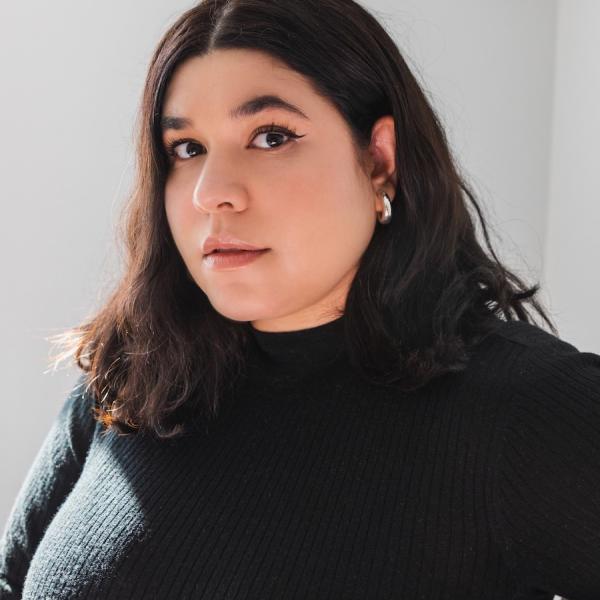Quick Study: June 15, 2023
Jo Reed: Welcome to Quick Study. The monthly podcast from the National Endowment for the Arts. This is where we'll share stats and stories to help us better understand the value of art in everyday life. Sunil Iyengar is the Pilot of Quick Study. He's the Director of Research and Analysis here at the Arts Endowment. Hi, Sunil.
Hi, Sunil. I understand we’ll be talking about orchestras today.
Sunil Iyengar: Yes, Jo, Orchestras, like many other types of arts organizations these days, have been deeply reflective about issues of gender and race diversity, equity, and inclusion—when they talk about membership, governance, and even, increasingly, the artistic content that’s delivered—for example, how different demographic subgroups show up in an orchestra’s repertoire.
A new report by the League of American Orchestras looks at survey data that the League collects annually from their orchestra members, asking for administrators to report on their orchestras’ demographic characteristics. The data were collected from the 2013-2014 season to 2022-2023, so a nearly 10-year span. In the report, they look at musicians, conductors, music directors, staffs and boards of orchestras. Overall, the report finds that progress in achieving greater diversity within orchestras has been slow, but there has been some progress.
Jo Reed: Tell me what did the report found.
Sunil Iyengar: Let’s take each category in turn. Among orchestra musicians, the ratio of men and women has held steady for roughly 10 years, with women accounting for 47%. Yet they are also roughly 20% times more likely than men to work in small or midsize orchestras, those with annual budgets of $3 million or less. I think it’s important to note here that large budget orchestras frequently can afford to pay their musicians as full-time workers with benefits, as smaller orchestras often cannot.
When it comes race and ethnicity, Hispanic representation among orchestra musicians has grown from 2.5% to nearly 5%, which much of this rise occurring throughout the pandemic. Multiracial groups also gained in representation among orchestra musicians, again especially during the pandemic: they are now at 2.4% of musicians, versus 0.8% about 10 years earlier. Blacks and African Americans, meanwhile, saw only slight growth as a percentage of orchestra musicians. But the share is only 2.4%!
Jo Reed: Oh, that’s still very low….
Sunil Iyengar: Yes. It certainly is. On the other hand, when considering Asian and Asian American musicians, their share of orchestras is higher than that of all other non-white or Hispanic groups combined. It’s 11%, which far exceeds Asian Americans’ share of the U.S. population. Throughout the period studied, they have also increased their representation in large budget orchestras. Asian and Asian American musicians are now 1.5 times more likely to belong to large than small orchestras. I do think it’s worth stating though Jo, the report cautions “Representation does not equate to power or influence.” All the same, other people of color were more likely to belong to small or midsize orchestras over the 10-year period.
Jo Reed: Okay. So these are the musicians who playing in the orchestra. Does the report include conductors as well?
Sunil Iyengar: Yes. That’s a separate category. Turning to conductors: here the share of women in these roles grew pretty remarkably. It nearly doubled—from about 13% to 24%, over the 10-year period. This growth, the researchers note, was driven mainly by women’s greater representation in small or midsize orchestras. And of course 24% is still a relatively low share of women in conducting roles.
Looking at race and ethnicity, we see again that Asians and Asian Americans occupy a higher share of conductor positions than any other groups of people of color. They have doubled their share of those positions—from nearly 6% in 2013-2014, to about 12% in 2022 and 2023. But Hispanics also saw some growth as a share of all conductors, from about 6% to 9%, and so did Blacks and African Americans, from 4.4% to 6.7%. Multiracial people, meanwhile, accounted for 3.6% in 2022/23, up from zero in the previous study period, and the highest share of multiracial people in ANY orchestra role.
Jo Reed: What are some of those other orchestra roles—I mean, besides musicians or conductors?
Sunil Iyengar: Well there are music directors. Women account for only 11% of all people in this position. Women music directors have increased representation in small and midsized orchestras, but reduced it in large orchestras. That said, there is some good news with music director demographics. Hispanic representation has grown considerably, for small/midsize and large orchestras alike, and they now are more likely than any other racial/ethnic group, except non-Hispanic whites, to hold this position in an orchestra, at 10%. Asian Americans have moved from zero representation—that’s so hard to believe!-- to 7.7% of music directors. Yet the share of African American music directors has dropped by 50%. Only 2.3% of music directors are Black or African American.
Jo Reed: Okay, so far we’ve heard about about musicians, conductors, and music directors. But what about behind the scenes? What about those who are running these organizations day-to-day, and just as importantly, or more importantly, what about orchestra leadership?
Sunil Iyengar: These are great questions. Among orchestra staffs, women have had robust representation over the period studied. They also make up 50% of all top executives in orchestras. Still, while the share of women as top executives of large orchestras has grown, men still account for two-thirds of all top execs in such orchestras.
What’s interesting though when it comes to the racial/ethnic composition of orchestra staff, you find that Blacks and African Americans occupy the largest share than for any other orchestra position, at 11% of all orchestra staff, and that the rate doubled over the period studied, having grown sharply during the pandemic. Among Asian Americans, the situation is different. They make up 3.3% of staff, lower than for any other position occupied by this ethnic group, and the rate has held largely flat.
Jo Reed: What about leadership? How does diversity look among those top execs you mentioned?
Sunil Iyengar: Right. So among top executives in orchestras, the share of people of color is still quite low—though there has been growth, particularly for Asian Americans, Hispanics, and multiracial people who inhabit these roles. At nearly 4%, Asian Americans hold the largest share of top execs, compared with any other group, except of course non-Hispanic whites.
Then you have board members. Fifty percent of small or midsize budget orchestra boards are women, but only 42.5% of large orchestra boards. Among different races and ethnicities, Black and African American representation more than doubled, to 7.4%. The next greatest share was Asian American at 3.9%, followed by Hispanics, at close to 3% of orchestra boards.
Jo Reed: Alright. You have given us a lot of statistics here. I invite you to tie this up.
Sunil Iyengar: Okay. Good point. So, I’ll try to summarize this: Women remain poorly represented in conductor and music director positions. And their representation is far greater in small and midsized than in large budget orchestras.
Also, with the exception of Asian Americans, apparently, the representation of people of color remains lower across all orchestra roles than in the U.S. population. African Americans in particular are poorly represented in most orchestra roles, and we even saw a decline in their share of music director representation.
So, plenty of work ahead, Jo. The League of American Orchestras has created an Equity Diversity Inclusion Resource Center online with a bunch of materials that might be helpful. There are other reports, frequently-asked questions, fact sheets, tools for orchestra leaders, staff and musicians, and a statement about the league’s own actions in this area. I should have mentioned that the present report was supported by a NEA research grant.
Jo Reed: Aha! Let me ask you in closing, and I know this is a very big topic but were blind auditions and their impact on representation discussed?
Sunil Iyengar: So, the report doesn’t go into that phenomenon, and as you know Jo, that’s been an industry standard for years and years. But lately I think there’s been some critiques of it, especially in light of racial and ethnic diversity. So, more to come in that area and I’ll keep an eye out for reports and maybe we can do a Quick Study episode on that at some point.
Jo Reed: Okay. I look forward to it. Thank you so much Sunil.
Sunil Iyengar: Thank you, Jo!
Jo Reed: Thank you. That was Sunil Iyengar, he's the Director of Research and Analysis here at the National Endowment for the Arts. You've been listening to Quick Study. The music is "We Are One" from Scott Holmes Music. It's licensed through Creative Commons. Until next month, I'm Josephine Reed. Thanks for listening.
In this episode, we look at a new research report on racial/ethnic and gender diversity in the orchestra field.




